Before I started researching Greek and Roman clothing, especially in antiquity, I did not realize that not only where the styles so varied, but that the colors were so vibrant and extensive. If your idea of Greek and Roman clothing is a white toga, or worse, a long white sheet wrapped men and women then hopefully this outfit will change your mind.
I first came across this picture of a fresco from Pompeii a few months ago and I was immediately smitten with the colors of the clothing on the lady second from the left that I knew I would have to try the combination at some point. I cannot tell what she is wearing under the palla (the blue and purple piece that wraps around her and her head), but it didn’t matter since it was the colors, not necessarily the particular outfit combination I liked. A couple of weeks ago I finally settled on what to make.
My quest for a fabric that is light, drapes nicely, is cool, etc continues, so this time I tried a cotton-linen blend. I know that cotton was not the fabric du jour in Greece or Rome but to say they did not have cotton would not be fair either. Considering the extensive trade with Egypt, I believe that that they had cotton clothing, and probably even cotton-linen blends, is a fair assessment to make. Instead of a peplos, I decided that I wanted to give the chiton a proper go. I’m short, as we have established, so I bought fabric that was fifty three inches wide. I used the width of the fabric as the length of my chiton, and it worked out perfectly. Width of the fabric, which was actually along the grain, was from wrist to wrist times two (front and back). The fabric did shrink a bit in the wash and it made the width a little narrower but I don’t think that took away from the effect I wanted.
I had previously experimented with having the holes for the hands at the top of the chiton, like instructed here, but, in my humble opinion, that does not look right nor is it comfortable unless you are wearing several yards of fabric around you. Instead, both sides of my chiton had seams what went from the hem to about eight inches from the top. These eight inches served as the arm hole and made the finished chiton look better and feel better on me. I bound the top edge of the chiton for three reasons: 1. in period they trimmed them, 2. since that was a selvedge end, I wanted it to look neat and tidy, and 3. the binding gave support to the closures. For the closures, I edge-stitched the front to the back with tiny but secure stitches at six different places: once on each side of the center for the neck opening, once at each end to close the armhole, and once between the neck and the arm at each side. I went with stitching instead of buttons because I was in a rush and did not want to make six button loops nor make six fabric buttons. The fibula attached to the chiton is purely decorative. It sounds more complicated than it really is.
Now, with the diplax (the outerwear) I took some license. Initially, I had much more fabric in the diplax, as seen in the statue here and as instructed in Draping Period Costumes, but that much fabric in this type of fabric just did not look pleasing. I decided that the best course of action was to modify the diplax so that there wasn’t excess fabric draping past the fibula that holds it together. I think it looks better and it makes the outfit much less cumbersome. Was it done like this in period? Maybe, maybe not, but I have no regrets.
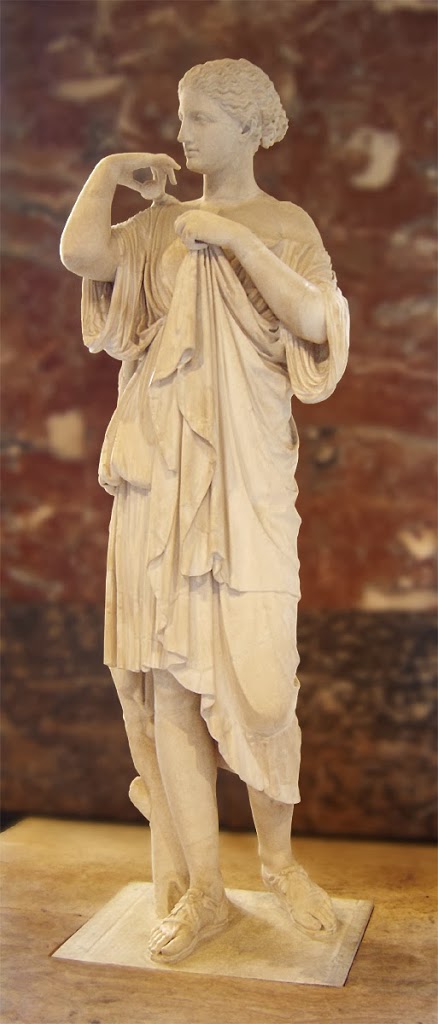 |
| Roman copy of a Greek statue of Artemis, circa 4th century BCE |
The colors themselves took me a few days to get used to. The fabric was originally white and I dyed it green and blue (the purple was purchased like that). I was perfectly aware of what they looked like on the fresco, and I was perfectly aware that the colors I got were very, very, close to the original, but I had not put them side by side. Once all the times were completed and I saw all the colors together, concern set it. I was worried that I was going to look like cotton candy, or sherbet. I was “this” close to abandoning the project but the folks in a costuming group to which I belong convinced me it would be alright. I am so glad I did not listen to myself. Not only did I get a lot compliments at the event, but from the moment I put the completed outfit on, including the fibulas, I pretty much fell in love with it. It’s so pretty. I love it.
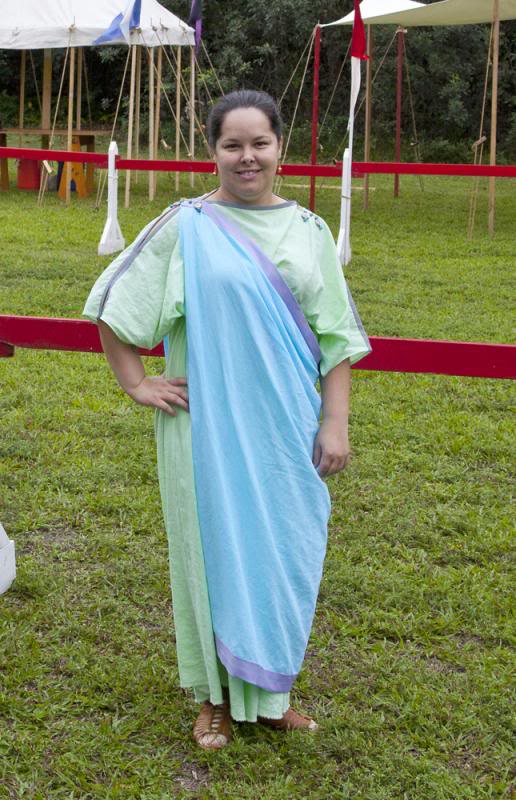
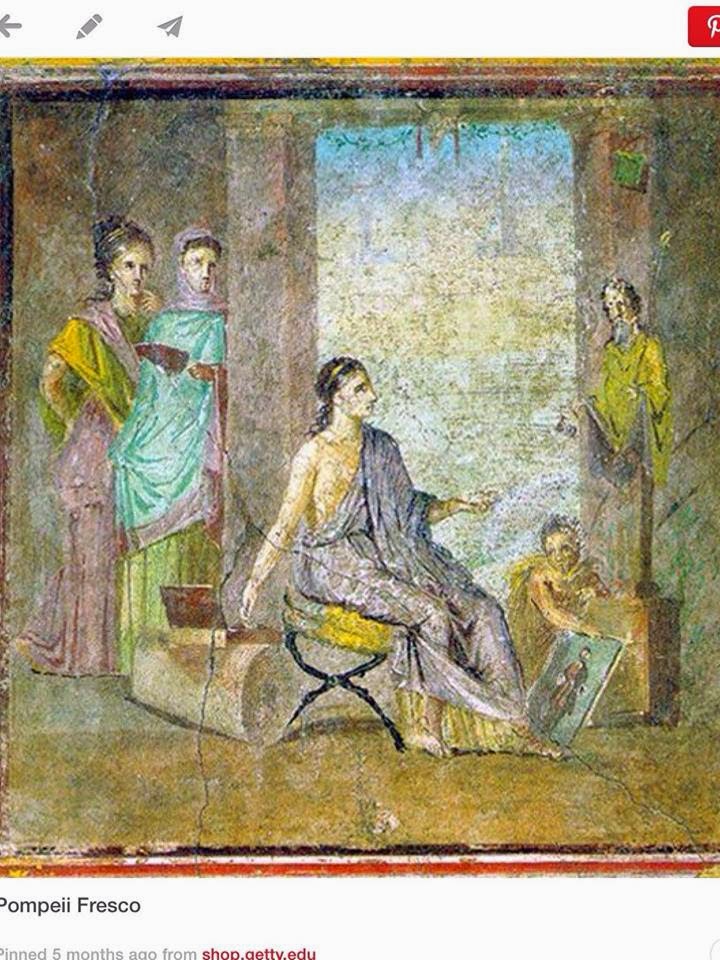
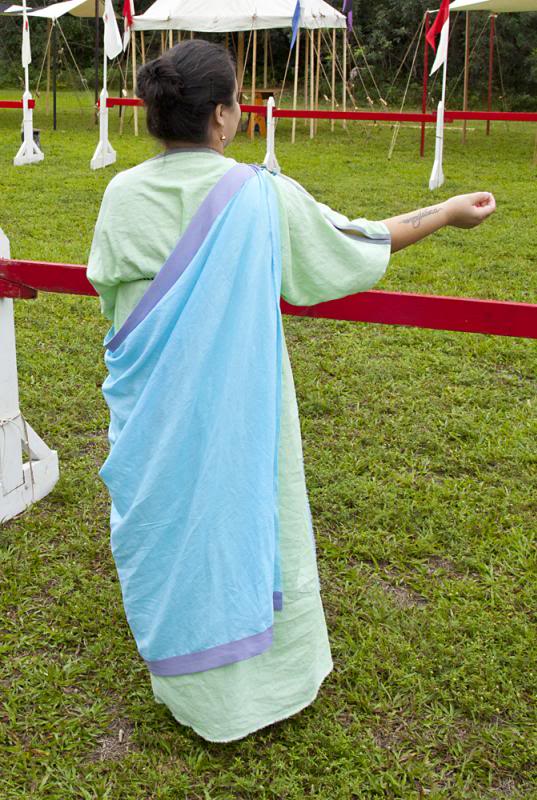
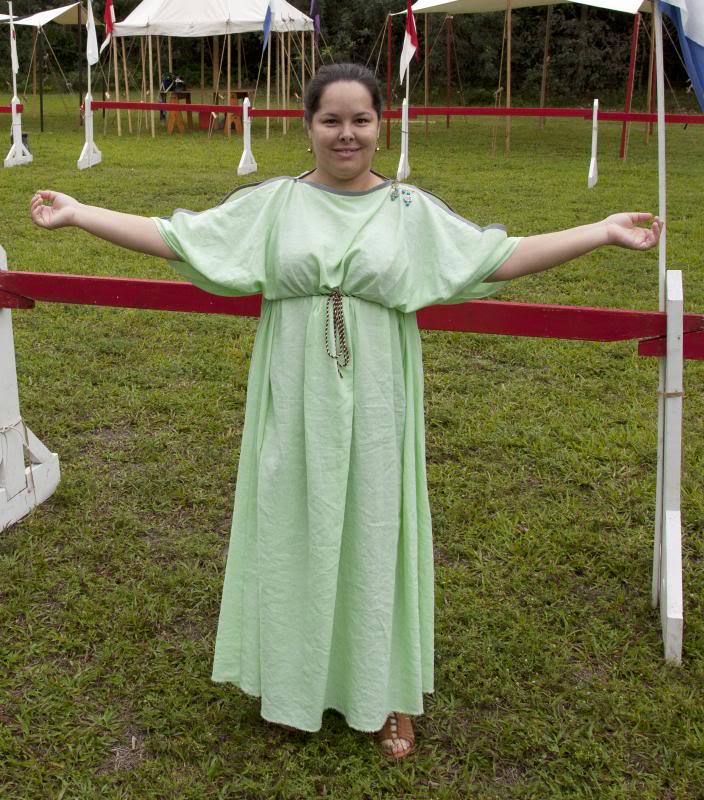
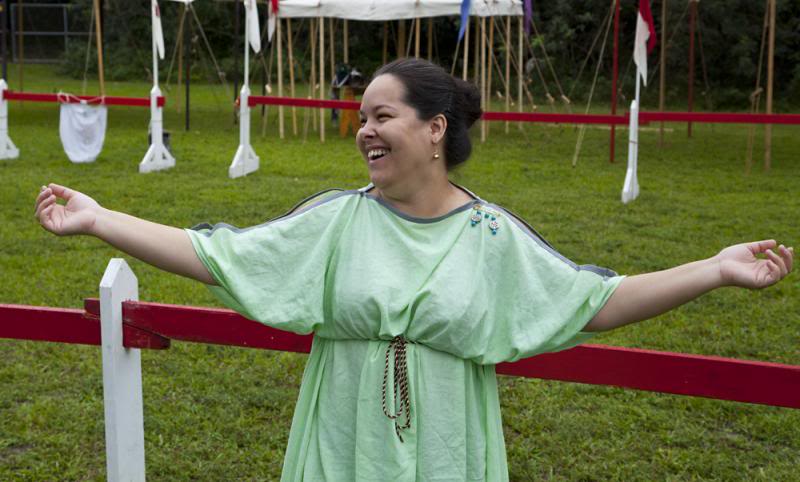
2 Responses